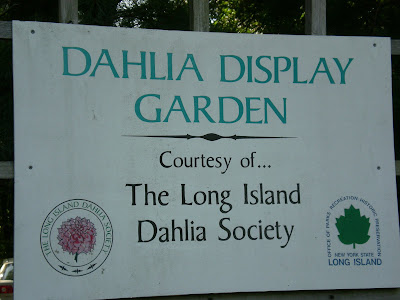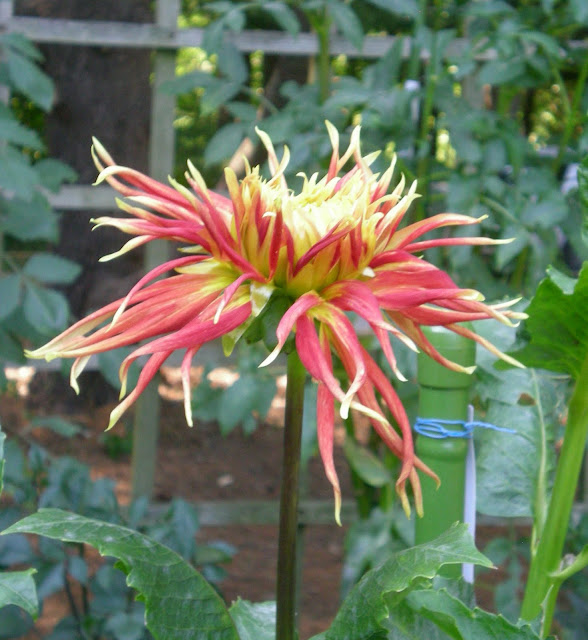What is an Arboretum? To my way of thinking it is a preserve of land that is a living museum of trees, where gardeners can go to study the growth aspects and nature of a variety of trees and shrubs in their most mature forms. Due to the endless space allotted to their growth, the trees just grow and keep on growing.
Here on Long Island we have the Bayard Cutting Arboretum, located on Montauk Highway in Oakdale.
Fortunately for lovers of trees, this wonderful property was donated in memory of
William Bayard Cutting (1850-1912),
by Mrs. William Bayard Cutting and her daughter Mrs. Olivia James, to the Long Island State Park region.
This collection of woody plants, trees and shrubs, occurs on a former vast south shore estate, thereby giving trees the maximum space to grow and expand to their fullest dimensions.
Paths lead the gardener into vistas of ornamental and more common varieties of trees and shrubs, but because they are able to grow to their maximum heights and widths, the images are astonishing.
This is the Sargent Weeping Hemlock, Tsuga canadensis 'Pendula' a mutation of the Canadian Hemlock. It spreads out horizontally instead of taking the more common upright conical form. It thrives as do other hemlocks in humid areas like the environment of Long Island.
Here is an American Sweetgum Tree, Liquidambar Styracuflua,
whose leaves look like stars. The tree produces a prickly hard round seed pod. If you see this tree at the arboretum, in the fall, you will know not to plant it where people walk. The hard seed pods that drop and can be dangerous underfoot. Many cities have ceased using this tree for sidewalks, although the leaves turn beautiful colors in the fall.
This is a lovely example of a lovely Smoke Tree, Cotubys coggygria.
In 1887 the Arboretum began its development using plans originating from the Frederick Law Olmsted, (1822-1903) landscape architectural firm. Olmstead was the original driving force behind the design and administration of New York City's Central Park.
With the help of Charles Sprague Sargent, (1841-1927), of Boston's Arnold Arboretum, William Bayard Cutting began to plan his conifer collection and designed the Pinetum.
Although many of the specimen conifers were lost in the hurricane of 1985, the Pinetum at Bayard Cutting is the most extensive collection of conifers on Long Island. With cypress, fir, hemlock, pine, spruce, and yews, some of trees are the largest specimens of their variety in the region.
A huge example of a Norway Spruce, Pica abies.
The unusual Japanese Plum Yew, Cephalotaxus Harringtonia Fastigiata.
This was not marked, but it looks like a tree that I have in the Jarvis Garden, a Golden Cypress. The foliage is really beautiful and has colorings of light lime green, white, and a chartreuse. Mine seems to do well even with this drought.

Probably the most amazing specimen tree on the property is the massive Weeping Beech.
Adults and children can duck into an opening of the branches and see

the tree from the inside out. A wooden walkway is provided which circles this enormous fantasy tree.
I guess if you or your children have read about Alice in Wonderland, you might get the same feeling once inside "the tree."

Poor Beech trees, their bark lends itself to initial carving.
Children will love playing under these bows, but no carving or climbing!

The great front lawn rolls down to the Connetquot River.


The former residence of the Cutting family has a wonderful wrap around porch,
Where visitors can enjoy tea or lunch under the Wisteria vines,
while gazing out
at the large groups of Canada Geese, and the resident Ospreys,
which nest yearly in the chimneys of the main house. A state grounds worker told me that the Osprey do not re-build their nests each year, they just maintain them from season to season. There are about 170 species of birds found in the park's acreage which is near the Connetquot River. The river, ponds and streams in this region provide an attractive environment for Herons, several species of Egrets, ducks and Swan.
For more information about this magical living tree museum, click here.
In addition to the Pinetum Walk, Bayard Cutting Arboretum features a Wild flower Walk, a Rhododendron Walk, a Bird Watcher's Walk, and a Swamp Cypress Walk.
Look what they did with terra cotta flower pots! On the way to the parking lot, after I had put my camera in my pocket, I saw a beautiful large Red Fox,
running along side me ( Wikipedia photo). What a great day to see trees and wildlife! For more information click here. The Arboretum is open to the public Tuesdays- Sundays 10:00 am - 4:30 pm EST.
The Islip Arts Council offers free Summer concerts in the park, so for a schedule click here.















































